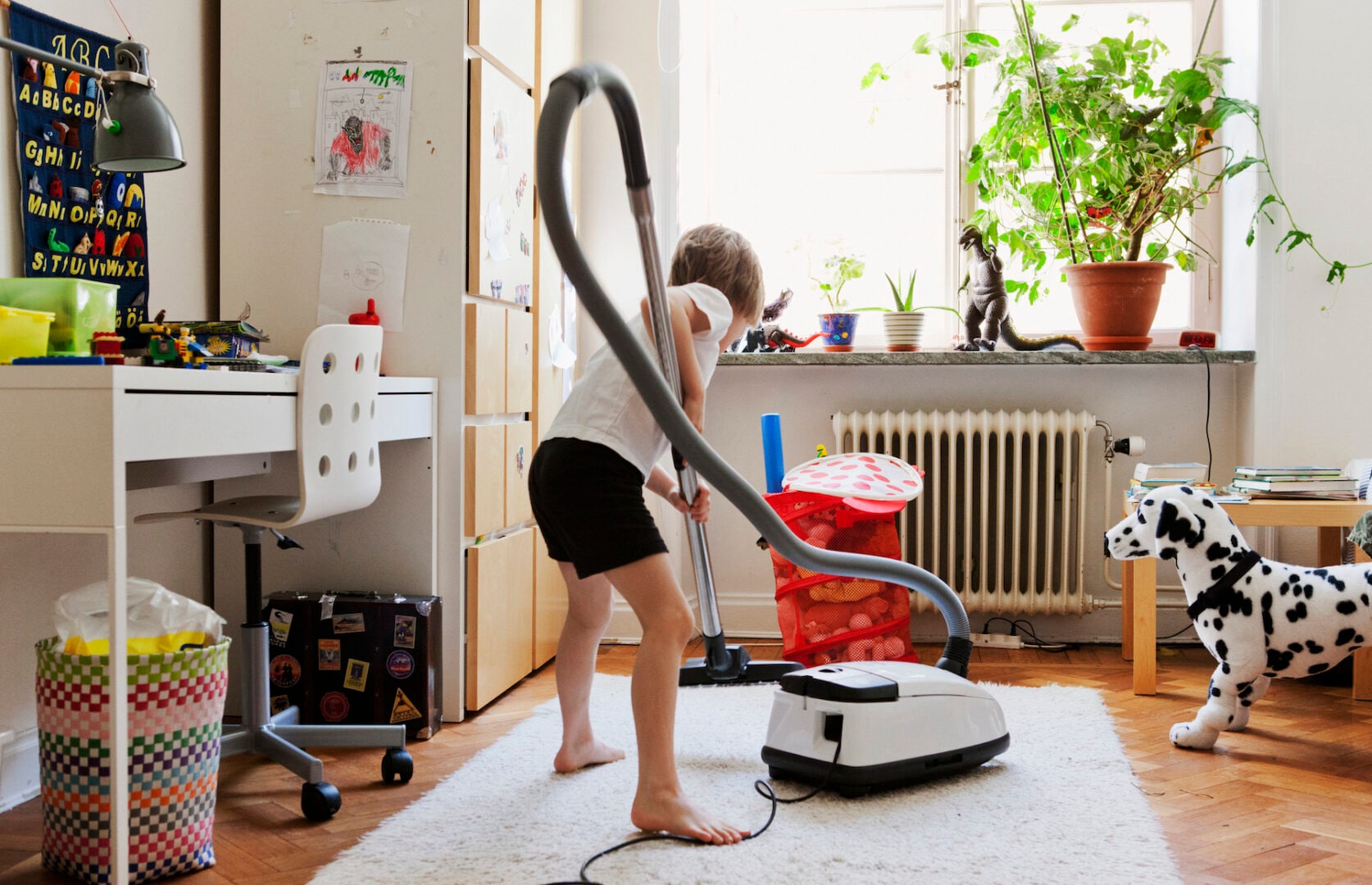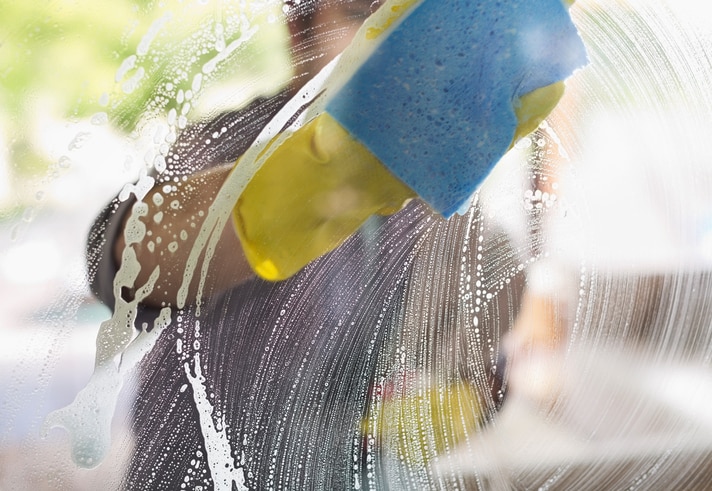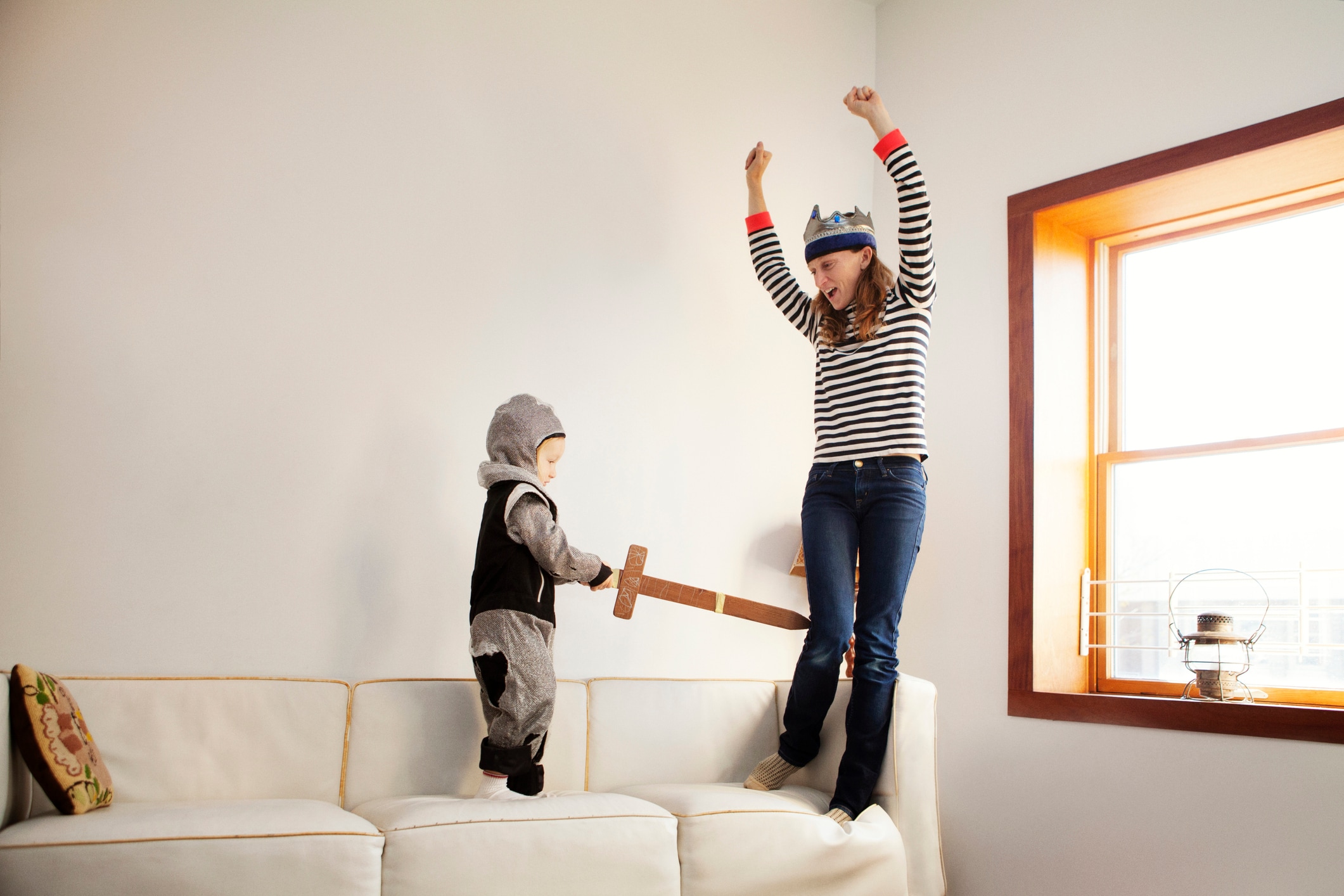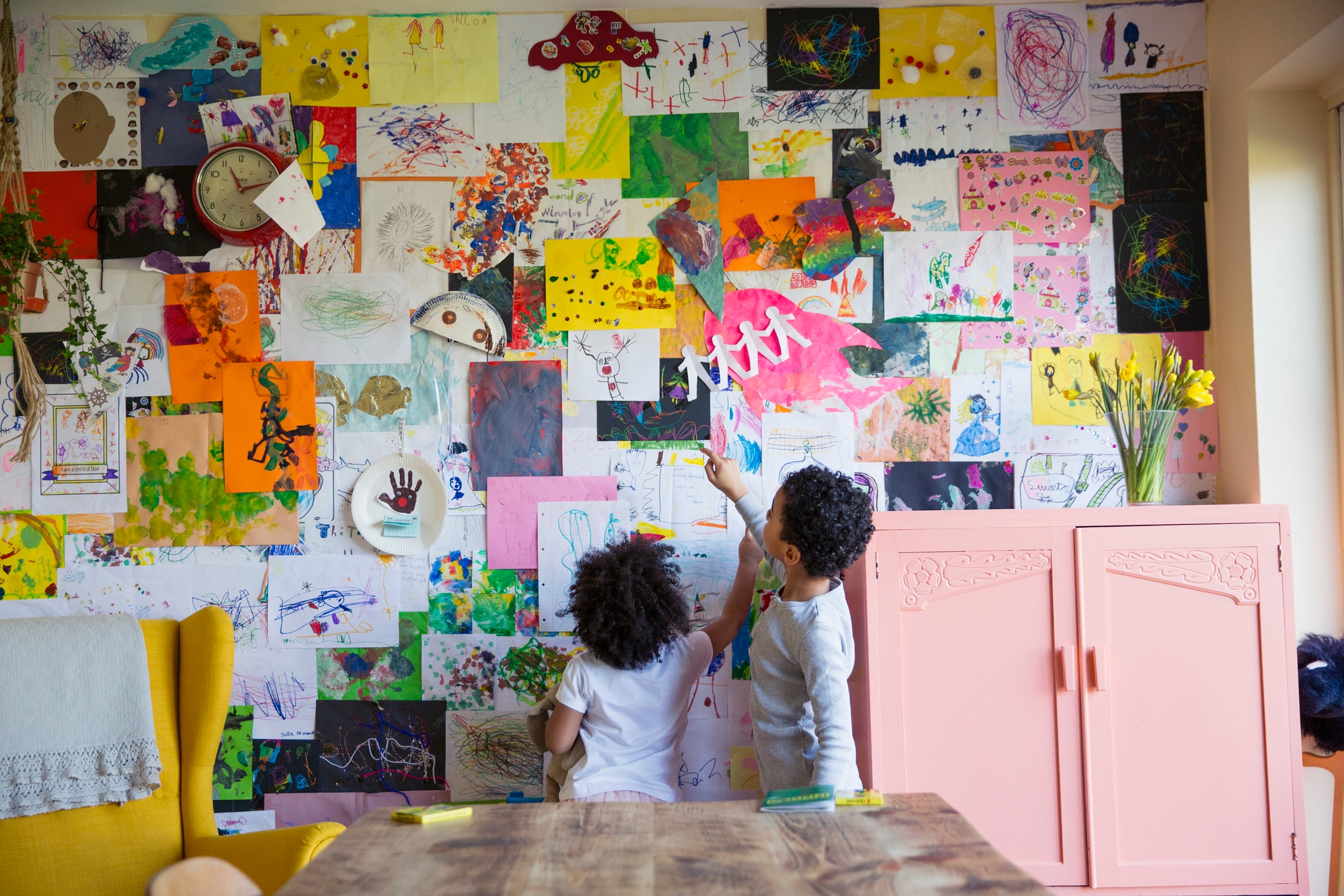In the hierarchy of kid priorities, having a clean room is pretty low on the list — as evidenced by the dirty clothes on the floor, uncapped markers and Pokemon cards strewn about and — blech — cups of half-drank milk (is that milk?) on the nightstand. What’s a parent to do (besides rage-clean)?! Teach them to clean their room on their own, of course — which isn’t as hard as you may think.
“There are a number of ways parents can help motivate their kids to clean their room,” says Lauren Schapiro, a psychotherapist with Liz Morrison Therapy in New York City. “One way to encourage kids to do chores is to reframe the language. Instead of chores, maybe they can be called responsibilities. This shift in language can help kids feel they are helping themselves and others around them.”
Want to get your kids cleaning up (instead of complaining)? These 11 tips will help you teach them how — and get them to continue — to clean their room.
“One way to encourage kids to do chores is to reframe the language. Instead of chores, maybe they can be called responsibilities.”
— Lauren Schapiro, psychotherapist
Kids cleaning up: Why it’s important
Most kids scatter like roaches the minute the phrase “clean your room” is uttered by their parents (which is part of the problem — more on this in a bit). But learning how to clean your room (and keep it clean) is, for better or worse, an important life skill.
“Chores are often a big topic of debate between parents and kids, but it’s important for kids to have them in order to learn the importance of taking responsibility,” Schapiro says. “When kids have chores, such as cleaning their room, it also helps improve their confidence and foster feelings of competence. All children want to learn how to master tasks they could not previously accomplish, and having chores helps improve self-esteem by succeeding in completing these tasks.”
The American Academy of Child and Adolescent Psychiatry (AACAP) adds that there are benefits to having kids do chores as young as 3. Children who do chores, AACAP notes, may “exhibit higher self-esteem, be more responsible and be better equipped to deal with frustration, adversity and delayed gratification.”
How to clean your room (for kids)
While having kids regularly clean their room yields bigger results than what meets the eye, getting them to actually do it is another story. These expert cleaning tips will help you teach kids to combine good habits with solid organizational tricks, which can make the job less daunting for all.
1. Talk through the clean-up process
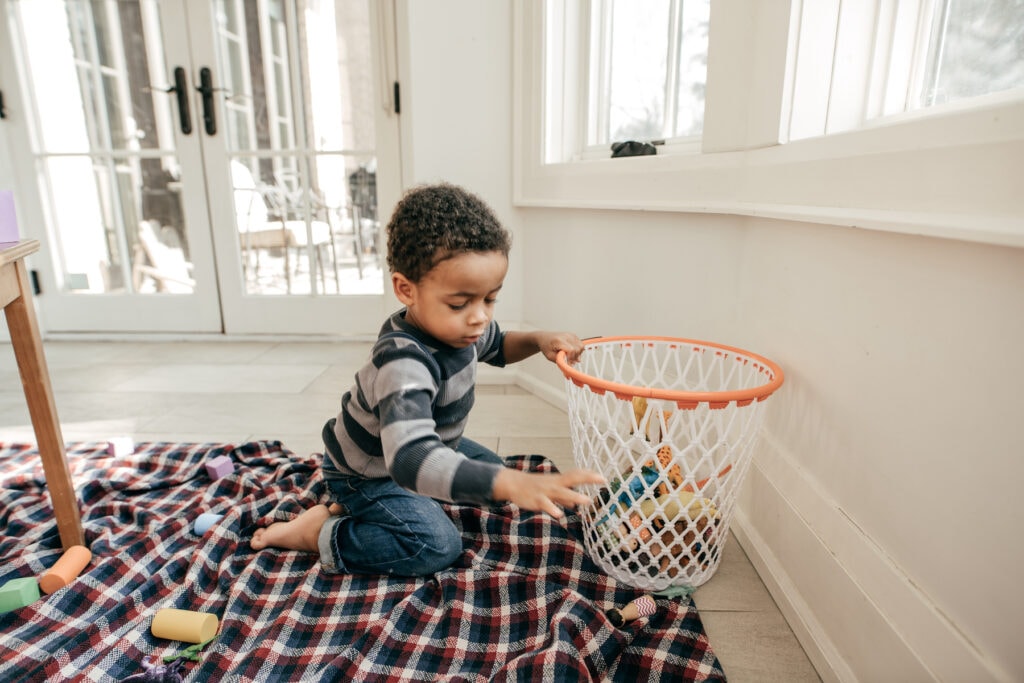
For kids first learning the art of cleaning their rooms (aka, the art of not shoving everything under their bed), Amelia Meena, owner of Appleshine Organization and Design in New York City, suggests narrating the process to them. “Talk through everything you’re cleaning up as you do it, so they can learn,” Meena says. “Say: ‘I’m putting all the trains back in this bin so we can find them easily next time. ‘Then I’ll put all the play food back in the play kitchen because that’s where it belongs.’”
2. Make it routine
Instead of telling your child to clean their room on a whim after walking by and seeing the latest tornado that hit, make it regular. This way, it doesn’t catch them off guard and seem arbitrary. “Having a weekly schedule of when kids should pick up their room shows them expectations from the beginning,” Schapiro explains, adding that, if possible, kids should get involved in the planning by letting them choose which chores they’re going to do and when.
That being said, when it comes to their bedrooms, how often you think they should be tidied up is up to you. “I’m pretty Type A, so I like having the playroom and bedrooms picked up every day or evening, but that might not work for everyone,” says Meena. “Whatever you decide, though, make sure the kids are participating in cleaning up, even just a small amount if they’re still little.”
“Whatever you decide, make sure the kids are participating in cleaning up, even just a small amount if they’re still little.”
— Amelia Meena, professional organizer
3. Crank the music
One mom’s solution for getting her 9-year-old to clean her room: Music. On her phone, specifically. “Getting to use/touch/do anything with my phone is still enticing to my daughter since she doesn’t have one,” says Kristin Imhoff of Middle Village, New York. “I let her make a playlist, and then she rocks out with headphones on while taking care of her room. It works every time and is pretty adorable to watch, too.”
4. Use carts on wheels
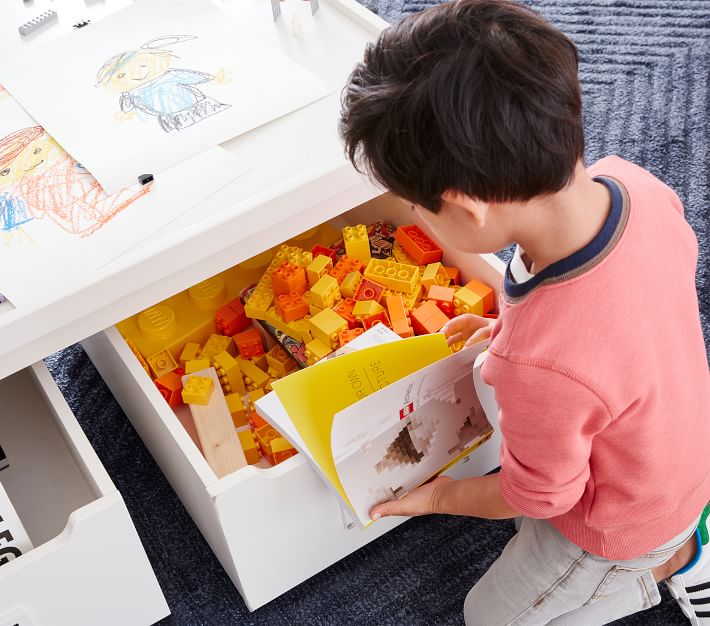
A favorite toy storage solution of Meena’s are carts with wheels. “They’re great for bulky items, like blocks, Magna-Tiles and train sets,” she says, “so the kids can wheel them to the play spot and easily dump them out, then put them back.”
Where to buy (Meena’s favorite): Carolina Grow-with-You Activity Carts ($200-$229 for two carts, Pottery Barn Kids)
5. Use clear bins with photos
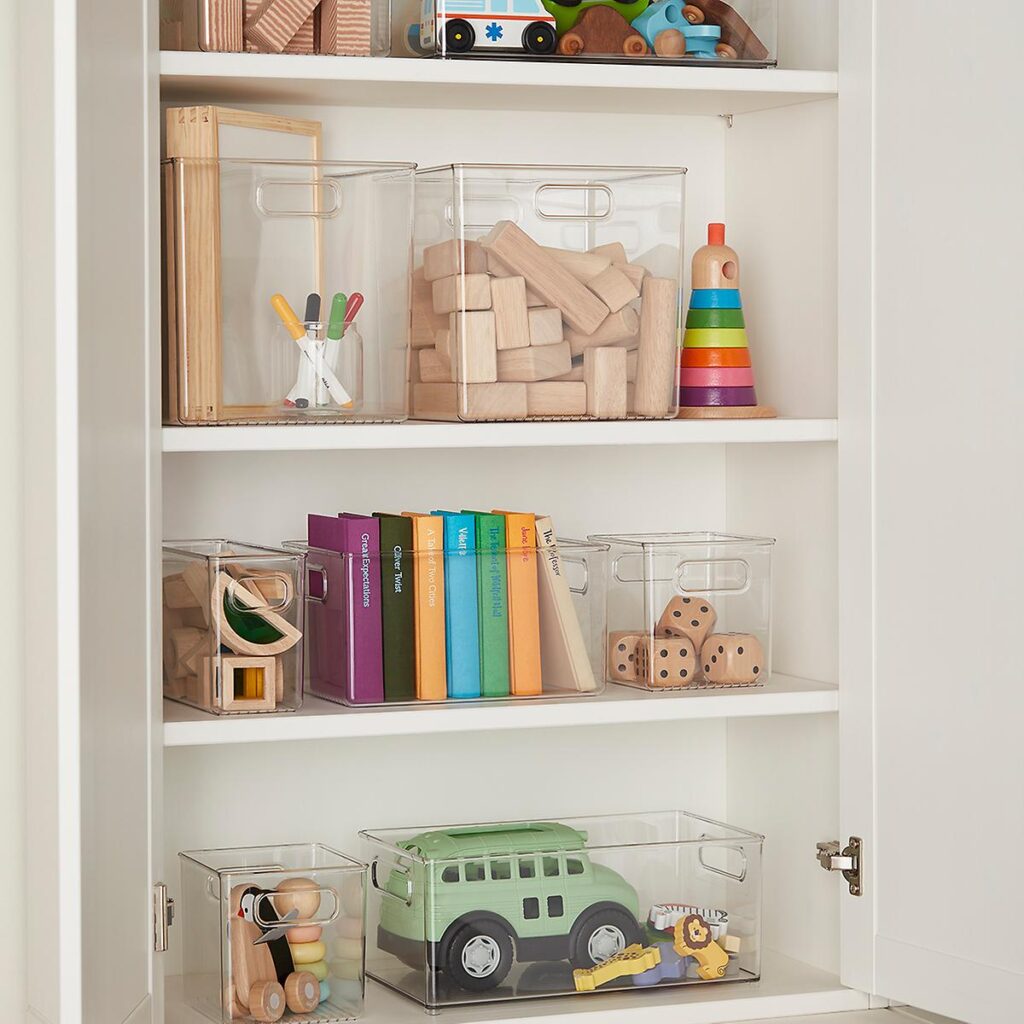
For little kids who make big messes in their rooms, Meena suggests getting a few clear bins and taping photos on the front, indicating what goes in each. “Contain the toys by category,” she says, “such as figures, LOL Dolls, cars, etc.” Meena also suggests rotating toy bins, so everything’s not out all at once. “Keep a few bins in storage for another day,” she says. “With fewer options to play with, it’ll keep the area less cluttered.”
Where to buy (Meena’s favorite): iDesign Linus Clear Storage Bins (starting at $16, The Container Store)
6. Used mixed storage
One of the sneakiest tips for cleaning your room? Try mixed storage. “Using different storage solutions, such as shelves, drawers, cabinets and toy chests shows kids that everything has a place and a different ‘home,’” Meena says. “Plus, it makes it easy for kids to identify where to put things — the books go on the shelf, the stuffed animals in the large basket and so on.”
“Using different storage solutions, such as shelves, drawers, cabinets and toy chests shows kids that everything has a place and a different ‘home.’”
— Amelia Meena, professional organizer
7. Ditch the art supplies
Kids love art. And that’s great, as it fosters creativity and expression. But it’s also great if said creativity isn’t all over their duvet. According to Meena, the best bet is to relegate art supplies to an area outside of little kids’ bedrooms. “When it comes to little ones,” she advises, “keep art supplies in one space that’s out of reach, so they can only be accessed and used with adult supervision.”
8. Consider a chore chart
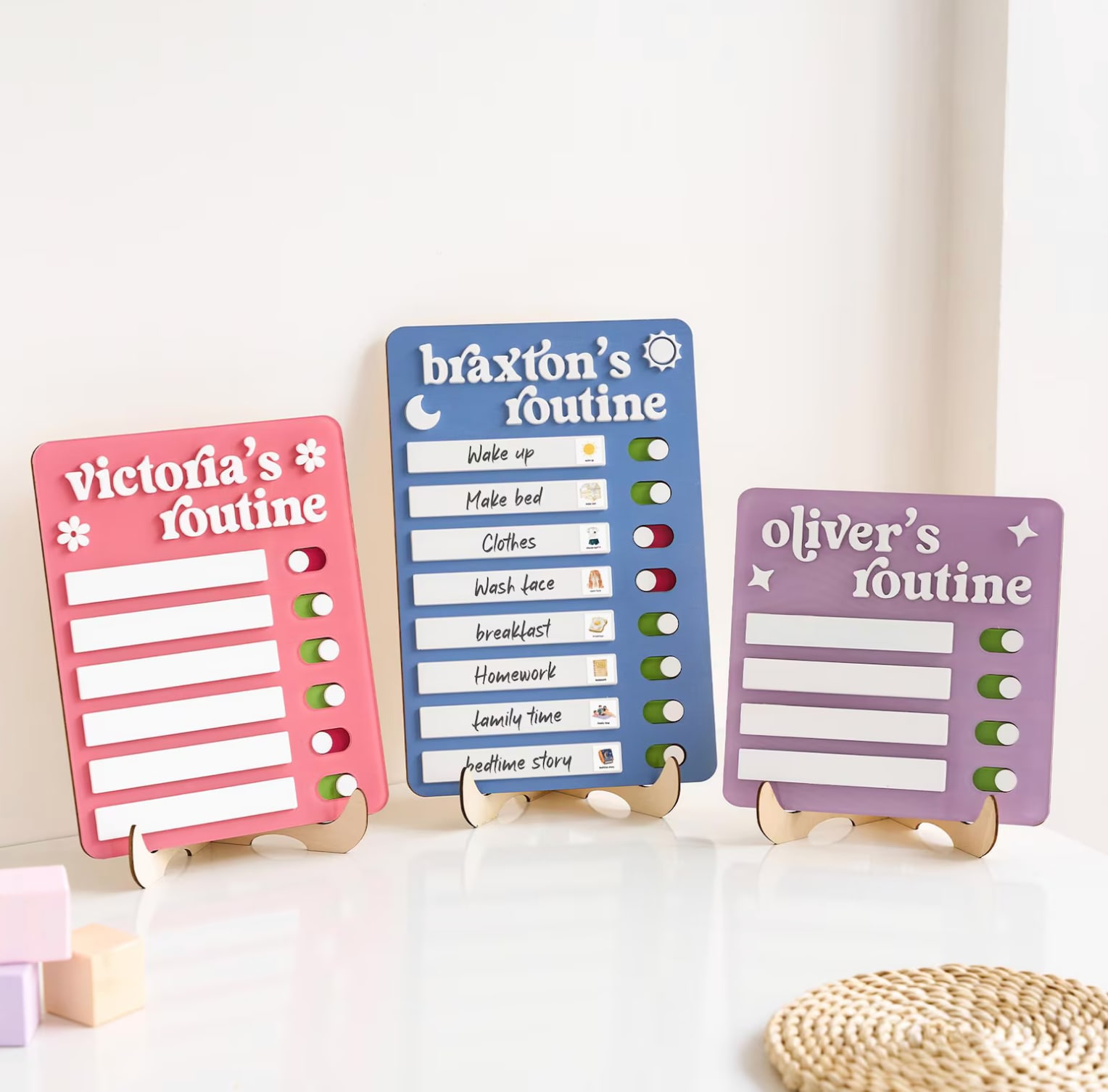
According to Schapiro, if you’re going to go the chore chart route, make sure you do it right. “If you use a chore chart, make sure it’s both developmentally appropriate and specific,” she says. “If you want your child to successfully complete the chore(s) you are giving them, it’s best to break it down and be very clear about how to do it.”
In other words: Don’t add “clean room” as one big, broad chore. Be more specific with things like “put clothes away,” “make bed” and “tidy desk.”
Where to buy: Personalized sliding chore chart ($20+, BeCraft Co/Etsy)
9. Try a 10-minute power clean
Lauren Sanchez, a mom of four in Los Angeles, motivates her kids to clean by setting a timer for 10 minutes and seeing how much they can get done. “It feels like a game to them,” Sanchez says. “I start the timer, and they go nuts, rushing to put away as many things as they can in the short amount of time.”
10. Try this shirt-hanging hack
Nobody — and we mean nobody — likes folding, sorting or putting away laundry. (And, need it even be said, this goes double for tweens and teens). Make hanging shirts easier for your kiddo by showing them this laundry hack TikTok from Carole Cleans Cars, which has been watched over a million times.
11. Offer rewards
In the end, for some kids (and parents’ sanity), rewards work best. Before incentivizing too much, though, keep in mind, a reward doesn’t have to involve a trip to Target or more screen time.
“Some kids are motivated to clean their room by rewards — but you don’t necessarily have to pay them or give them a gift,” Schapiro says. “A reward can be a fun family activity or even praise. While some parents don’t agree with rewarding children for doing chores (because they feel their child is expected to do chores), when kids are first starting to clean their room on their own, praise serves as a positive reinforcement.”
